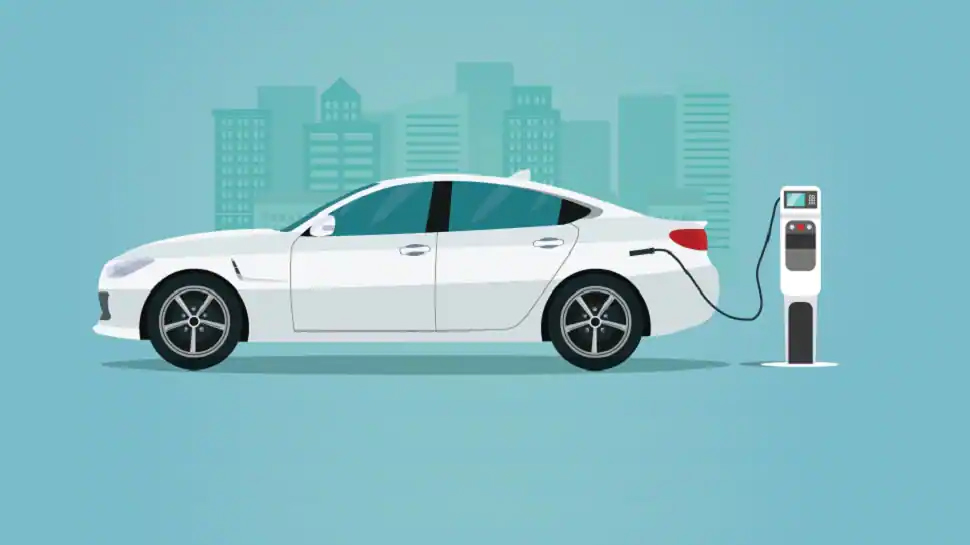news details |
|
|
| Challenges in taking Electric Vehicles to the Indian masses: In depth analysis | | |  Electric vehicles in India have surged in the last five years, but the sector still has a long way to go before reaching parity with ICE vehicles. The year 2021 has been a better year for the industry, particularly for electric two-wheelers (E2W), which are sometimes seen as low-hanging fruit for EV adoption. As the electric vehicle industry continues to grow, companies and governments alike have declared their everlasting support for EV adoption. Electric vehicles in India have surged in the last five years, but the sector still has a long way to go before reaching parity with ICE vehicles. The year 2021 has been a better year for the industry, particularly for electric two-wheelers (E2W), which are sometimes seen as low-hanging fruit for EV adoption. As the electric vehicle industry continues to grow, companies and governments alike have declared their everlasting support for EV adoption.
To make EV adoption easier in India, the government created the Faster Adoption and Manufacturing of Hybrid and EV (FAME) programme in 2015, with a $130 million first investment in electric car subsidies. In its second iteration, FAME II, the government upped the EV subsidy to $1.4 billion in 2019. Under FAME II, the government also set a target of installing at least 1 million high-speed electric two-wheelers on the road by March 2022.
Though the Indian government's policies, rising fuel prices and greater awareness among the customers has given the nascent sector a much-needed boost. But more work remains to be done. India still has a long way to go and needs to address the following key challenges in taking EVs to the Indian masses.
Lack of sufficient Charging Infrastructure
Inadequate accessibility to EV Charging stations is one of the most significant barriers to poor adoption of EV Vehicles. Expansion of the charging infra is the need of the hour. For this to happen, both the government and the commercial sector must work in tandem for additional infrastructure and charging stations in key cities and along important routes.
Another thing that comes to mind is, why can't we just put EV chargers at gas stations? While repurposing gas stations is a fantastic idea that has gained popularity throughout the world, and starting to see some traction here as well, it does have some limitations. For one issue, charging an EV might take a long time depending on the charging station and the size of the EV's battery. Because of the lengthy charging time, chargers must be placed in regions where people may leave their automobiles for extended periods of time. This needs a reconsideration of the charging geography. Setting up charging stations nearer to office, commercial complexes is something that will play a key role.
Range anxiety, the fear of running out of electricity
The perceived disadvantage of range is the second most often mentioned obstacle to EV adoption. Most individuals have "range anxiety" because they fear an EV's range is insufficient to get them to their destination. While companies, including ours, are investing in products with improved mileages and efficiencies. The battery's energy density is a critical component in enabling those capabilities. This is something that will push up the product prices. Mileages of EVs even today are such that they easily suffice the average daily commute of the users. Battery swapping, charging infrastructure developments are things that should help here.
Financial constraints
The initial cost of owning an electric car is currently higher than that of ICE vehicles mainly due to the cost of the battery installed in the vehicles. Manufacturers anticipate cost parity by 2025 - if not sooner - and are collaborating with the electric car battery production supply chain to lower costs and improve overall efficiency. Having said this, presently, the Government subsidies are helping bring costs at parity.
Apart from this, limited credit options and high EMI make it tough for the EV Sector to operate in a nation with several economic issues. Today the interest rate on a combustion engine vehicle is 10-14% depending on the bank and the customer. The same for an electric vehicle is around 20-25% . These financial limitations can create a significant impediment to the country's mass adoption of EVs.
Battery Technology
One of the most significant barriers to EV adoption is the battery manufacturing process and supply chain. To enable EVs, new mining and supply networks are required. The lithium-ion battery is the most common and frequently utilised EV energy source. We do not manufacture lithium-ion cells or its raw materials.. India relies on imports for EV batteries, resulting in exorbitant prices for these vital components and, eventually, EVs. This is also a key reason for the price difference between ICE and EV vehicles. To assist increase product quality and dependability, India should focus on producing battery essential components in-house. Such heavy dependence may also impact India's international trade policy or its EV ambitions. It is also important to focus on alternate battery technologies.
Despite the fact that Indian consumers are growing more receptive to exploring e-mobility than ever before, there is still a negative view about Estrange anxiety, a lack of charging infrastructure, a price difference between EV and ICE vehicles, and a lack of certainty regarding resale value are all contributors to this perception..
Two-wheelers make up 76 percent of all vehicles in the country. Customizing India's EV Policy to meet the present needs of the country's auto sector, such as focusing more on the manufacturing of electric two-wheelers, is required. India must promote private investment in battery manufacturing plants and achieve economies of scale, while also focusing on the newer technologies.
Stabilizing the policy environment by focusing on tax breaks and non-fiscal incentives might assist to alleviate demand uncertainty, allowing the business to reach economies of scale. A collaborative eco-system in order to capitalise on cost-efficiencies, technological expertise, and improving existing infrastructure. Inclusionary growth is the key to the future. |
|
|
|
|
|
|
|
|
|
|
|
|
| |
| |
|
|
|
|
 |
|
|
